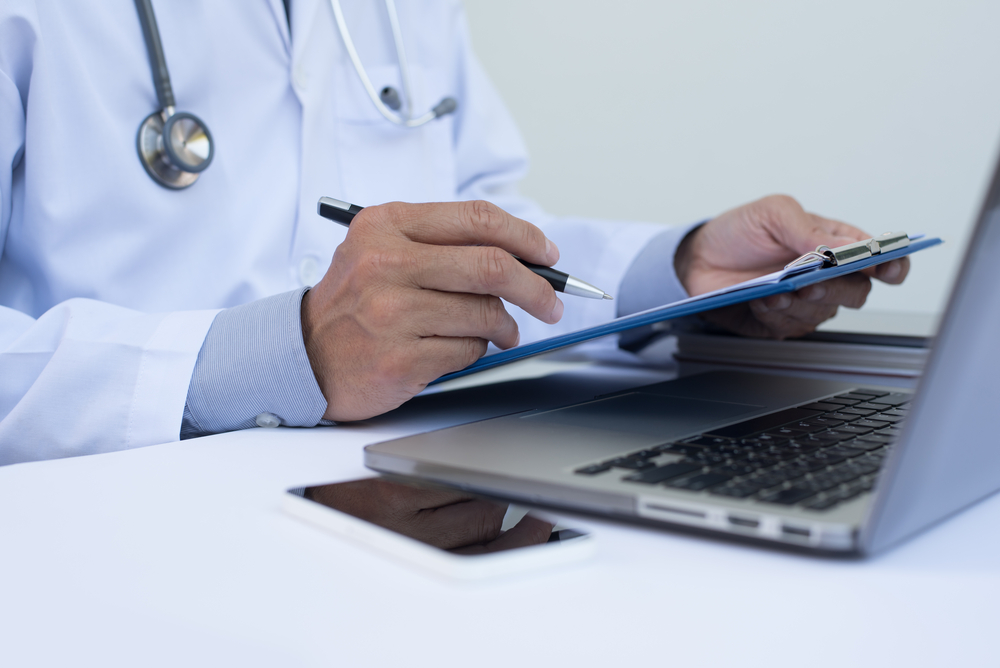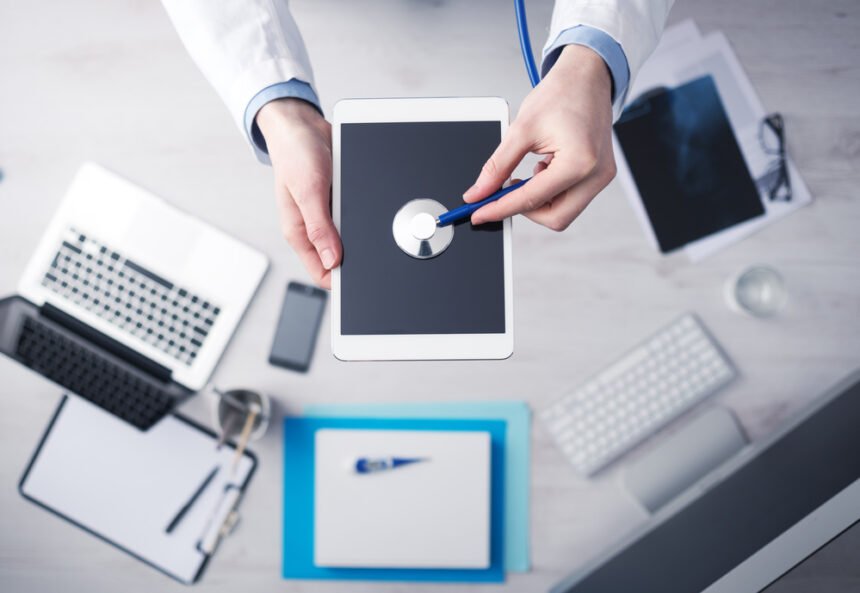Remote healthcare services gain utmost popularity whilst setting the path for the future of mobile care delivery. A tech leap forward in mobile healthcare domain has armed consumers with the systems of remote patient monitoring, granted multiple access to medical services, enhanced the quality of care provision and an opportunity to get more precise diagnoses and prescriptions. Will the U.S. clinics take a chance to make a step forward in improving the medicare for under served areas and enhancing the accessibility of the services for uninsured patients?. They can do so by keeping pace with medical software innovations. We witness ubiquitous use of mobile devices with the overall number of smartphone owners surpassing 80% of all American millennials. Such wide employment makes mobile gadgets greatest tools for health-conscious patients to make sure that they are as fit as a fiddle. Healthcare providers take into account the paramount importance of keeping in line with tech reality. In turn, the growing interest in adopting mobile and remote care systems pushes tech solutions providers to build groundbreaking products to the industry. As the consumers become more digitally attuned, they own a variety of devices, and latest mobile solutions ought to feature cross-platform compatibility to allow running healthcare apps on various smartphones, tablets, PDAs and whatever innovative gadgets. These apps, connected to the Cloud, enable effective storage and sharing of generated medical data for better patient-caregiver collaboration.
Telemedicine as a trend 2017
One of the acute problems of American healthcare system is the medical staffing shortage. Rural areas that comprises about 20% of population primarily take the hit. These underserved locations have three times less physicians per 10,000 people, given that the number of seniors living there surpasses urban elderly population. On top of that, such social indicators as higher unemployment rate and lower income cause more uninsured rural residents, which make the work of medical professionals even more troublesome.  However, new technologies encourage the change of the reality. Telemedicine solutions arm both care providers and consumers with a range of novel sources, strategies and methods aimed at assisting in remote diagnosing, consulting, treating and monitoring. Powered by capabilities of wireless networks, Cloud computing, systems for medical data and patients’ records storage and sharing, telemedicine services boast wide distribution and growth in popularity. Among main objectives of telemedicine is delivering healthcare to consumers in the underserved areas. 72% of Americans today enjoy non-personal connection with healthcare providers, two-way video and other means of smooth remote communication as Salesforce reports. Choosing telemedicine, consumers gain advantages which otherwise they would be precluded from. #1 No more self-diagnosis risks: patients get instant professional advice and access medical data to actively participate into monitoring health. Even seniors, who are less prone to adopt tech innovation in healthcare, find telemedicine services convenient and easy-to-use. #2 Patients needn?t worry about the reliability of treatment as telemedicine providers uphold responsibility for the services. Although the majority of Americans adheres to traditional way of communication with medical professionals, the number of telemedicine appointments is growing year after year. By using such services as video conferences and alike, patients can visit out of reach medical specialists to get reliable diagnose and respective treatment. #3 Telemedicine enhances access to healthcare. The cost of health insurance and the quality of services trigger controversy as regards to American healthcare system, while tech-driven approach is the way out. This year, remote medical services hit the headlines as health care provision outside medical facilities is affordable to everyone who owns a mobile gadget. A virtual visit to the doctor for a reasonable price is a solution to make American healthcare system socially friendly. #4 Patients’ health and wellbeing issues are better addressed by healthcare providers and medical professionals who actively take part into telemedicine development. For instance, the service is vital for diabetic patients facing the need of remote glucose level or blood pressure monitoring or for those groups of consumers suffering from chronic diseases and requiring real-time health monitoring capabilities. Telemedicine services empower doctors and patients to cooperate over the health problems.
However, new technologies encourage the change of the reality. Telemedicine solutions arm both care providers and consumers with a range of novel sources, strategies and methods aimed at assisting in remote diagnosing, consulting, treating and monitoring. Powered by capabilities of wireless networks, Cloud computing, systems for medical data and patients’ records storage and sharing, telemedicine services boast wide distribution and growth in popularity. Among main objectives of telemedicine is delivering healthcare to consumers in the underserved areas. 72% of Americans today enjoy non-personal connection with healthcare providers, two-way video and other means of smooth remote communication as Salesforce reports. Choosing telemedicine, consumers gain advantages which otherwise they would be precluded from. #1 No more self-diagnosis risks: patients get instant professional advice and access medical data to actively participate into monitoring health. Even seniors, who are less prone to adopt tech innovation in healthcare, find telemedicine services convenient and easy-to-use. #2 Patients needn?t worry about the reliability of treatment as telemedicine providers uphold responsibility for the services. Although the majority of Americans adheres to traditional way of communication with medical professionals, the number of telemedicine appointments is growing year after year. By using such services as video conferences and alike, patients can visit out of reach medical specialists to get reliable diagnose and respective treatment. #3 Telemedicine enhances access to healthcare. The cost of health insurance and the quality of services trigger controversy as regards to American healthcare system, while tech-driven approach is the way out. This year, remote medical services hit the headlines as health care provision outside medical facilities is affordable to everyone who owns a mobile gadget. A virtual visit to the doctor for a reasonable price is a solution to make American healthcare system socially friendly. #4 Patients’ health and wellbeing issues are better addressed by healthcare providers and medical professionals who actively take part into telemedicine development. For instance, the service is vital for diabetic patients facing the need of remote glucose level or blood pressure monitoring or for those groups of consumers suffering from chronic diseases and requiring real-time health monitoring capabilities. Telemedicine services empower doctors and patients to cooperate over the health problems.
Mobile Health and Remote Care Solution
A number of healthcare providers promote mobile apps as a part of continuous treatment whether it is an occasional health problem or a chronic disease. This year, the U.S. mHealth market focuses on delivering monitoring apps and data visualization systems, that comprises 84% of market’s revenue according to Statista. The solutions range from wireless sensors that collect data and store it in the Cloud to remote care mobile platforms designed to streamline healthcare delivery and transform it into a one-touch service. Mobile technologies in the domain gain momentum due to such leading providers as Cleveland Clinic Innovations. CCI believe that continuous investments into medical tech area pay off, and they aim at boosting innovations up by transferring worthwhile solutions from development institutions, e.g. a reputable healthcare software company, to medical facilities. Recently, one of their end-clients represented by a network of clinics all over the U.S. has deployed a newest remote care mobile solution, developed by OCSICO software company. The industry challenges tech solutions providers with tough requirements to communication systems. Within the framework of that remote care solution, the issue was resolved by implementing voice/video P2P platform fueled by WebRTC technology and compatible with both Android and iOS. Although it was not easy to bring together complex tech back-end, intuitive design and the industry specifics, the development of various components from scratch resulted into the value-added system for patients and medical professionals. The solution unified web and mobile applications. As for Android and iOS apps, such components as “Home app”, “Relatives app” and “Heartbeat module” enabled even non-tech savvy users to request health care services, access patient?s data and video/voice call services. This medical alert system allowed medical staff to receive alerts on unsteady health condition, notify and update patients in no time. To make things operate in the same boat, the functioning of mobile apps was thoroughly synced with medical professionals? activities via web dashboard. Here, as ever, the communication module built upon a TV-connected Android-driven device had a major role to play. Patients own a home TV equipped with connected SNA (or Sensor Network Appliances), and to contact a patient through web dashboard a doctor makes a call, displayed as an incoming one on a TV screen. Such connection mode can be adopted in whatever areas regardless patient?s health and welfare. Thanks to the web application, medical professionals have loads of collected patients? data presented graphically neat, easy to share and analyze by the means of optimized measurement API server and REST server. What is more, the application allows sending out medical surveys that can be generated both automatically or manually and assists in reporting the efficiency of treatment. So, did CCI get the right way in their drive towards tech adoption? Seemingly yes, as the tech sound solution has significantly benefited digitally attuned consumers.
Conclusion
The insight into the adopted system truly testifies to the fact that mobile technologies have become a real breakthrough in healthcare. The quality of remote medical services is compared to the effectiveness of traditional doctor-patient communication and even surpasses in-person visits. This is especially relevant for rural areas where lower income and medical staff shortage affect the quality of healthcare delivery. Nonetheless, telemedicine and remote mobile care solutions improve the well-being of rural consumers e.g. by allowing them to make remote appointments with narrow medical specialists, get quality advice and respective treatment from wherever they live. Technologies pave the way to affordable and time efficient medical services that will become an inalienable part of American healthcare system in the foreseeable future. Now, US clinics widely adopt brand new solutions to bring the work of medical professionals, monitoring activities and patient involvement into treatment to a whole new level.








